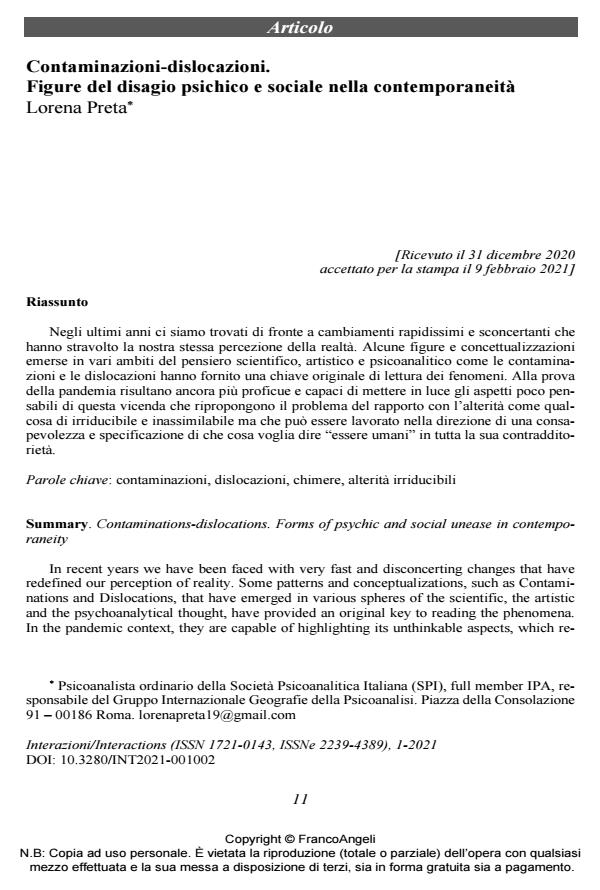Contaminations-dislocations. Forms of psychic and social unease in contemporaneity
Journal title INTERAZIONI
Author/s Lorena Preta
Publishing Year 2021 Issue 2021/1
Language Italian Pages 14 P. 11-24 File size 174 KB
DOI 10.3280/INT2021-001002
DOI is like a bar code for intellectual property: to have more infomation
click here
Below, you can see the article first page
If you want to buy this article in PDF format, you can do it, following the instructions to buy download credits

FrancoAngeli is member of Publishers International Linking Association, Inc (PILA), a not-for-profit association which run the CrossRef service enabling links to and from online scholarly content.
In recent years we have been faced with very fast and disconcerting changes that have re-defined our perception of reality. Some patterns and conceptualizations, such as Contamina-tions and Dislocations, that have emerged in various spheres of the scientific, the artistic and the psychoanalytical thought, have provided an original key to reading the phenomena. In the pandemic context, they are capable of highlighting its unthinkable aspects, which re-propose the problem of the relationship with otherness as something irreducible and unassimilable but which can be worked towards an awareness and specification of what "being human" means in all its contradictions.
Keywords: Contaminations, dislocations, chimeras, irreducible othernesses.
Lorena Preta, Contaminazioni-dislocazioni. Figure del disagio psichico e sociale nella contemporaneità in "INTERAZIONI" 1/2021, pp 11-24, DOI: 10.3280/INT2021-001002